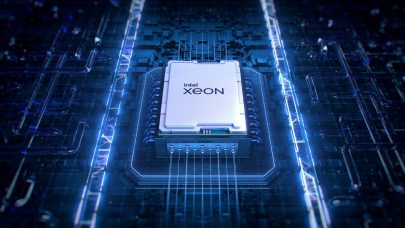Visualization at Exascale
Considering the difficulties in reaching the exascale computing goal in the prescribed timeframe of 2020, we should expect to see a growing body of research on this important topic. Recently, Japanese researchers have written a paper describing an interesting new approach to visualization for the exascale era. More specifically, their strategy involves the interactive viewing of in-situ visualization.
 In their paper, Akira Kageyama and Tomoki Yamada of the Graduate School of System Informatics at Kobe University argue that in-situ visualization (applying the visualization at run-time) is “an inevitable approach” necessary for reducing the size of data output. The problem that they identified was that in-situ visualization loses interactivity in the absence of a suitable steering method.
In their paper, Akira Kageyama and Tomoki Yamada of the Graduate School of System Informatics at Kobe University argue that in-situ visualization (applying the visualization at run-time) is “an inevitable approach” necessary for reducing the size of data output. The problem that they identified was that in-situ visualization loses interactivity in the absence of a suitable steering method.
The duo propose a new method for the interactive analysis of in-situ visualization images produced by a batch simulation job. Here’s how they describe the process, generates its output as movies, not numbers:
In our method, we apply as many in-situ visualization as possible and analyze the output image data later in an interactive way. See Fig. 1d. Any information on the simulated phenomena is supposed to be in the data set of the images, and the analyzer can dynamically explore the image space.
When an output movie from one in-situ visualization is compressed to a reasonable size, say 10 MB, the total output data size is only 10 TB even the number of applied in-situ visualization is one million. This data is still smaller than the size of raw numerical data in exascale simulations that would amount to the order of PB.
The full article [pdf] explains the entire process in detail.
Next >> Programming at Exascale
Programming at Exascale
While the HPC community undoubtedly enjoys pondering the “exascale problem,” they are also acutely aware that this is no mere academic exercise. There are significant unknowns associated with this next major FLOPs goalpost. As German researcher Jens Breitbart notes in a new research paper, neither the CPU architecture or programming model have been determined. Fielding such machines in the next decade will require huge advances.
 “Multicore CPUs are not expected to scale to the required number of cores per node, but hybrid multicore CPUs consisting of different kinds of processing elements are expected to solve this issue,” writes Breitbart in the International Journal of Networking and Computing. He proposes that future hybrid clusters employ a dataflow-like programming model.
“Multicore CPUs are not expected to scale to the required number of cores per node, but hybrid multicore CPUs consisting of different kinds of processing elements are expected to solve this issue,” writes Breitbart in the International Journal of Networking and Computing. He proposes that future hybrid clusters employ a dataflow-like programming model.
The article also discusses “how current shared memory, GPU and PGAS programming models can deal with the upcoming hardware challenges [and] describes how synchronization can generate unneeded inter- and intra-node transfers in case the memory consistency model is not optimal.”
At the heart of Breitbart’s proposal is “a variation of the PGAS model allowing implicit fine-grained pairwise synchronization among the nodes and the different kinds of processors.”
Green Cloud Computing
Researchers from the School of Information Technology at Jiangxi University of Finance and Economics in China are expecting big things from green cloud computing (GCC).  A paper in IET Communications makes the case for a growing ecosystem of cloud consumers and cloud providers, that is entirely network-based. Under this coming paradigm, “a user simply submits its service request to the cloud service provider with the connection of Internet or wired/wireless networks,” the authors write.
A paper in IET Communications makes the case for a growing ecosystem of cloud consumers and cloud providers, that is entirely network-based. Under this coming paradigm, “a user simply submits its service request to the cloud service provider with the connection of Internet or wired/wireless networks,” the authors write.
“The result of the requested service is delivered back to the user in time, whereas the information storage and process, interoperating protocols, service composition, communications and distributed computing, are all smoothly interactive by the networks,” they add.
They describe Green Cloud Computing (GCC) as the “provisioning of cloud services under a set of energy consumption criteria.” Their survey takes into account GCC schemes in relationship to networks, microprocessors, task scheduling algorithms, virtualisation technology, cooling systems, networks and disk storage.
Next >> MPI and Multithreading for Molecular Docking
MPI and Multithreading for Molecular Docking
A group of researchers from Lawrence Livermore Lab has published a new paper in the January 2013 edition of Journal of Computational Chemistry on the subject of MPI and multithreading for molecular docking. More specifically, they are focused on the parallel molecular docking of large databases on petascale computers.
 The researchers adopted a mixed parallel scheme of both message passing interface (MPI) and multithreading implemented in the AutoDock Vina molecular docking program. The resulting program, named VinaLC, was run on the petascale systems at Lawrence Livermore National Laboratory.
The researchers adopted a mixed parallel scheme of both message passing interface (MPI) and multithreading implemented in the AutoDock Vina molecular docking program. The resulting program, named VinaLC, was run on the petascale systems at Lawrence Livermore National Laboratory.
“To exploit the typical cluster-type supercomputers, thousands of docking calculations were dispatched by the master process to run simultaneously on thousands of slave processes,” the authors write. “Each docking calculation takes one slave process on one node, and within the node each docking calculation runs via multithreading on multiple CPU cores and shared memory.”
Using this approach, the code was able to scale to more than 15K CPUs with a low overhead cost of 3.94%. One million docking calculations were processed in just 1.4 hours.
Next >> XSEDE Role in Science Education
XSEDE Role in Science Education
 Steven Gordon has penned an article in IEEE publication Computing in Science & Engineering, elucidating the importance of the XSEDE system in advancing science education. In particular, Gordon highlights the “need for computational science programs that prepare the current and next generation of researchers, educators, and practitioners to effectively utilize digital services in support of science, technology, engineering, and mathematics.”
Steven Gordon has penned an article in IEEE publication Computing in Science & Engineering, elucidating the importance of the XSEDE system in advancing science education. In particular, Gordon highlights the “need for computational science programs that prepare the current and next generation of researchers, educators, and practitioners to effectively utilize digital services in support of science, technology, engineering, and mathematics.”
And he believes that XSEDE can “facilitate the founding and expansion of such programs.”
XSEDE stands for Extreme Science and Engineering Discovery Environment. Funded by the National Science Foundation, this five-year, $121-million project both replaces and expands the NSF TeraGrid.
According to Gordon, XSEDE’s Education and Outreach services have three main goals:
- Prepare the current and next generation of researchers, educators, and practitioners to effectively utilize digital services in support of science, technology, engineering, and mathematics (STEM).
- Create a significantly larger and more diverse workforce in STEM.
- Inculcate the use of digital services as part of the routine practice for advancing scientific discovery.
Gordon serves as the national lead for the XSEDE Education Program. He has been affiliated with Ohio State University since 1975.


























































